Complete Guide to Valve Terminals: Types, Applications, and Selection
Table of Contents
- Introduction to Valve Terminals
- What are Valve Terminals and How Do They Work?
- Types of Valve Terminals in the Market
- Advantages and Benefits in Industrial Pneumatic Systems
- Selection Criteria for Valve Terminals
- Industrial Applications in the USA
- Installation and Maintenance
- Frequently Asked Questions about Valve Terminals
Complete Guide to Valve Terminals: Types, Applications, and Selection
Introduction to Valve Terminals
In the field of industrial pneumatics in the United States, valve terminals represent one of the most significant advancements in optimizing compressed air system control. These devices, also known as valve manifolds or valve blocks, have revolutionized how industries manage their pneumatic systems, offering compact, efficient, and highly configurable solutions.
The demand for more integrated and efficient pneumatic systems has driven the development of these solutions across various industrial sectors in the USA, from automotive manufacturing to packaging and general manufacturing. In this comprehensive guide, we'll analyze in depth what valve terminals are, their different types, practical applications, and the fundamental criteria for selecting the most suitable system for your specific needs.
What are Valve Terminals and How Do They Work?
Valve terminals are modular pneumatic control systems that integrate multiple valves into a single compact unit, allowing centralized control of several pneumatic actuators from a single point. These systems represent a significant evolution compared to traditional installations of individual valves, offering considerable advantages in terms of space, efficiency, and maintenance.
Main components of a valve terminal
A typical valve terminal system consists of:
- Base plate or manifold: Structure that serves as support and provides internal channels for air distribution.
- Pneumatic valves: Generally solenoid valves that control the air flow to the actuators.
- Electrical control system: May include multipole connections, fieldbus communication, or direct control.
- Accessories: Such as mufflers, pressure regulators, and connectors.
Operating principle
The operation of a valve terminal is based on a relatively simple but effective principle:
- Compressed air enters the terminal through a main connection.
- This air is distributed internally through channels in the base plate.
- Individual solenoid valves, mounted on the base plate, control the passage of air to the working ports.
- When a solenoid valve is activated by an electrical signal, it allows air to pass to the corresponding actuator.
- Air exhaust is managed through common channels and is typically directed to silencers with granules to reduce noise.
This integrated design allows controlling multiple actuators from a single point, greatly simplifying the installation, wiring, and maintenance of the pneumatic system.
Key Takeaways: Valve Terminal Fundamentals
- They are modular systems that integrate multiple valves in a compact unit.
- They consist of a base plate, valves, control system, and accessories.
- They allow centralized control of several pneumatic actuators.
- They simplify installation, wiring, and maintenance in complex systems.
Types of Valve Terminals in the Market
The US market offers a wide variety of valve terminals, each designed to meet specific needs in different industrial environments. Understanding the different types available is essential for selecting the most appropriate solution for each application.
According to their communication system
- Terminals with multipole connection: Use a single multi-conductor electrical connector to control all valves. They are ideal for simpler installations that are close to the controller.
- Terminals with fieldbus: Incorporate industrial communication protocols such as Profibus, DeviceNet, EtherNet/IP, or Profinet, allowing more advanced integration with control systems and significantly reducing the necessary wiring.
- Terminals with integrated control: Include their own PLC or controller, able to function as autonomous nodes within a larger network.
According to their physical configuration
- Modular systems: Allow adding or removing individual valves, offering maximum flexibility to adapt to changes in system requirements.
- Compact systems: Have a fixed configuration with a determined number of valves, generally being more economical but less flexible.
- Valve plates: Designed for specific applications with particular space or performance requirements.
According to the type of integrated valves
Valve terminals can incorporate different types of valves according to the required function:
- 5/2 valves: For controlling pneumatic cylinders with double effect.
- 3/2 valves: For controlling single-acting cylinders or blowing functions.
- 5/3 valves: With closed, open, or pressurized center position, for applications requiring intermediate positions.
- Mixed combinations: Many modern terminals allow combining different types of valves in the same unit.
Specialized systems
In addition to standard configurations, there are specialized solutions for specific environments:
- Terminals for aggressive environments: With special protections against corrosion, humidity, or extreme temperatures.
- High-capacity terminals: Designed to handle large air flows in applications requiring large actuators.
- Safety terminals: Incorporate certified safety functions for applications where safety is critical.
- Terminals for hygienic applications: Specially designed for the food and pharmaceutical industry, with materials and finishes that comply with specific regulations.
In the US market, SF valve terminal systems stand out, offering excellent value for money and great versatility for various industrial applications.
Key Takeaways: Types of Valve Terminals
- Classification is based on communication system, physical configuration, and valve type.
- Communication options include multipole, fieldbus, or integrated control.
- There are modular systems, compact systems, and specialized plates.
- Different valve types (5/2, 3/2, 5/3) can be integrated according to the application.
Advantages and Benefits in Industrial Pneumatic Systems
Implementing valve terminals in industrial pneumatic systems offers numerous advantages over traditional installations with individual valves. These advantages have significantly contributed to their growing adoption in American industry.
Space optimization
One of the most evident advantages is the drastic reduction in required space:
- Valve terminals can reduce space occupied by up to 70% compared to individual valve installations.
- Their compact design allows installation in smaller control cabinets or directly on machinery.
- The integration of multiple functions in a single device frees up valuable space in industrial environments where every inch counts.
Cost reduction
The economic impact is another determining factor:
- Lower installation cost: Significant reduction in assembly time and materials needed for installation.
- Wiring savings: Especially in fieldbus systems, where a single cable can replace dozens of individual connections.
- More efficient maintenance: Centralization facilitates diagnosis and reduces downtime during interventions.
- Lower energy consumption: More efficient systems with fewer potential leaks and better compressed air management.
Greater reliability and diagnostics
Modern valve terminal systems incorporate advanced features:
- LED indicators for quick visualization of each valve's status.
- Integrated diagnostic capabilities that allow identifying specific failures.
- Fewer pneumatic connections, reducing potential leak points.
- Robust designs that guarantee a longer system life.
Flexibility and scalability
Modular valve terminals offer exceptional adaptability:
- Possibility to add or replace individual valves without disassembling the entire system.
- Ability to combine different types and sizes of valves in the same terminal.
- Adaptation to future expansions or modifications of the pneumatic system.
- Simple integration with new or existing control systems.
Improvement in system performance
The optimized design of valve terminals contributes to better overall performance:
- Faster response times due to reduced connection distances.
- Greater precision in actuator control.
- Reduction in pressure drops thanks to optimized internal channels.
- Better management of compressed air consumption, an expensive resource in industrial environments.
These advantages make modular kits of valve terminals a highly profitable investment for companies looking to optimize their pneumatic systems, improve operational efficiency, and reduce long-term costs.
Key Takeaways: Advantages of Valve Terminals
- Reduce space occupied by up to 70% compared to individual valves.
- Decrease installation, wiring, and maintenance costs.
- Offer greater reliability with integrated diagnostics and fewer leak points.
- Provide flexibility to adapt to future changes in the system.
- Improve performance with faster response times and greater precision.
Selection Criteria for Valve Terminals
Selecting the appropriate valve terminal for a specific application requires considering various technical and operational factors. This detailed evaluation will ensure that the chosen system meets both current and future requirements of your pneumatic installation.
Fundamental technical parameters
- Required flow rate: Determine the maximum flow needed for the actuators that the terminal will control. This value, generally expressed in cubic feet per minute (CFM), is crucial for correctly sizing the system.
- Working pressure: Verify the operating pressure range (minimum and maximum) compatible with your compressed air system and the requirements of your actuators.
- Response times: For applications requiring high speed or precise synchronization, consider the switching times of the valves.
- Type of valves needed: Identify which valve configurations (3/2, 5/2, 5/3, etc.) your application requires and in what quantities.
Control and communication considerations
The control method of the valve terminal should align with your existing automation system:
- Multipole connection: Ideal for simpler systems or independent machines where the distance to the controller is short.
- Fieldbus: Determine which communication protocol your system uses (Profibus, EtherNet/IP, etc.) and select a compatible terminal.
- Number of inputs/outputs: Calculate how many valves you need to control currently and anticipate possible future expansions.
- Diagnostic functions: Evaluate if you need advanced monitoring and diagnostic capabilities for critical applications.
Environmental and installation factors
The operating environment can significantly influence the selection:
- Ambient temperature: Verify that the selected terminal can operate within the temperature range of your installation.
- Exposure to contaminants: In environments with dust, moisture, or corrosive agents, consider terminals with special protections or specific certifications.
- Vibrations: For applications with significant vibrations, look for systems with reinforced fixings.
- Space restrictions: Carefully measure the available space for installation and verify the dimensions of the system.
- Mounting orientation: Some terminals have specific orientation requirements for optimal operation.
Economic and logistical considerations
Beyond technical aspects, also evaluate:
- Total cost of ownership: Consider not only the initial price but also installation, maintenance, and energy consumption costs.
- Availability of spare parts: Verify the ease of obtaining replacement components in the US market.
- Technical support: Evaluate the level of technical assistance offered by the manufacturer or distributor in the United States.
- Compatibility with existing equipment: Ensure that the new terminal integrates correctly with your current systems.
Basic calculation for sizing
To determine the appropriate size of a valve terminal, you can use this simplified formula:
- Calculate the total air consumption of all actuators that will be controlled (in CFM).
- Apply a simultaneity factor (percentage of actuators that will operate at the same time).
- Add a safety margin of 20-30% for future expansions or variations in consumption.
For example, if you have 10 cylinders with an individual consumption of 1.8 CFM, and you estimate that 70% will operate simultaneously:
Required flow = 10 cylinders × 1.8 CFM × 0.7 (simultaneity factor) × 1.3 (safety margin) = 16.4 CFM
We offer technical advice to help you select the most appropriate valve terminal for your specific application, considering all these factors to ensure optimal performance of your pneumatic system.
Key Takeaways: Selection of Valve Terminals
- Evaluate technical parameters such as flow rate, pressure, and response times.
- Consider the control method and communication compatible with your system.
- Take into account environmental factors such as temperature and exposure to contaminants.
- Calculate appropriate sizing including margins for future expansion.
Industrial Applications in the USA
Valve terminals have found application in numerous industrial sectors across the United States, where their versatility and efficiency have made them essential components for pneumatic automation. Below, we explore some of the most relevant applications in the American industrial context.
Automotive industry
The US automotive sector, with important manufacturing plants in regions such as Michigan, Tennessee, and Alabama, extensively uses valve blocks in:
- Assembly lines: Synchronized control of multiple actuators for precise assembly operations.
- Handling systems: Management of pneumatic grippers and clamping devices in robots and manipulators.
- Testing stations: Control of actuators for verification of components and assemblies.
- Welding machines: Precise sequencing of operations in spot welding and other processes.
Food and beverage industry
This sector, particularly important in regions such as California, Wisconsin, and the Midwest, implements valve plates and terminals in:
- Bottling lines: Precise control of actuators for filling, capping, and labeling.
- Packaging machines: Synchronized operations in food packaging equipment.
- Sorting systems: Control of diverters and pushers for product classification.
- Processing equipment: Management of sanitary valves and actuators in food processes.
In this sector, valve terminals with specific certifications for food environments and resistant to frequent cleaning with chemicals are particularly valued.
Pharmaceutical and cosmetic industry
With important centers in New Jersey, California, and North Carolina, this sector uses multipol plates and integrated valve systems in:
- Aseptic filling machines: Precise control in sterile environments.
- Blister systems: Sequencing of operations in medication packaging.
- Inspection equipment: Control of actuators in optical verification systems.
- Packaging lines: Management of multiple actuators in high-precision operations.
In these applications, cleanliness, reliability, and precision are fundamental requirements, so valve terminals with special materials and advanced diagnostic capabilities are frequently used.
Packaging industry
A cross-sectoral industry with presence throughout the USA that implements YSV valve plates and other systems in:
- Box forming machines: Sequential control of folding and gluing.
- Shrink wrappers: Management of actuators for plastic film wrapping.
- Case packers: Coordination of movements for placing products into boxes.
- Palletizers: Control of actuators in automatic palletizing systems.
General machinery and manufacturing
In the broad machinery manufacturing sector, valve terminals are used in:
- Machine tools: Control of clamping systems, tool changes, and cooling.
- Handling equipment: Management of suction cups, grippers, and actuators in pick-and-place systems.
- Production lines: Centralized control of multiple workstations.
- Special machines: Custom solutions for specific applications.
The versatility of modern valve terminals, such as SF valve terminals, allows them to be adapted to virtually any industrial application requiring pneumatic control, from simple processes to complex automation systems integrated with fieldbus communication.
Key Takeaways: Industrial Applications
- In the automotive industry, they control assembly lines and handling systems.
- The food sector uses them in bottling, packaging, and product classification.
- The pharmaceutical industry implements them in aseptic filling and verification systems.
- They are essential components in packaging machinery and general manufacturing.
Installation and Maintenance
Proper installation and adequate maintenance are fundamental to ensure optimal performance and longevity of valve terminal systems. Below, we present best practices for implementing and caring for these systems in American industrial environments.
Installation recommendations
- Strategic location:
- Install the terminal as close as possible to the actuators to minimize the length of pneumatic tubes and reduce response times.
- Ensure adequate access for maintenance and diagnostics.
- Consider the environmental conditions (temperature, humidity, contaminants) at the installation point.
- Compressed air preparation:
- Install an adequate air treatment system (filter, regulator, lubricator if necessary) before the valve terminal.
- Verify that the air quality meets the manufacturer's specifications (typically according to ISO 8573-1).
- Ensure a stable pressure supply within the recommended range for the terminal.
- Pneumatic connections:
- Use pneumatic tubes of the appropriate diameter to avoid pressure drops.
- Ensure that all connections are properly tightened to prevent leaks.
- Clearly identify each line to facilitate future maintenance.
- Consider using quality pneumatic fittings to ensure reliable and durable connections.
- Electrical connections:
- Strictly follow the wiring diagram provided by the manufacturer.
- In fieldbus systems, verify the correct termination of the network and the addressing of the nodes.
- Use shielded cables when necessary to avoid electromagnetic interference.
- Ensure that electrical connections are protected against moisture and contaminants.
- Configuration and commissioning:
- Correctly configure the communication parameters according to your control network.
- Individually verify the operation of each valve before complete operation.
- Adjust pressure regulators if the terminal has them.
- Document the final configuration for future reference.
Preventive maintenance program
Regular maintenance is essential to prevent failures and extend the system's useful life:
Daily/weekly inspections
- Visual verification of possible air leaks (listen or use soapy water on suspicious connections).
- Check for proper operation of status LED indicators.
- Monitoring of working pressure to detect deviations.
Monthly/quarterly maintenance
- Inspection and cleaning of air filters prior to the terminal.
- Verification of the tightness of pneumatic and electrical connections.
- Check of the operation of each valve individually.
- External cleaning of the system to avoid accumulation of dust or residues.
Annual maintenance
- Complete verification of the system including performance tests under load.
- Preventive replacement of components with wear (seals, mufflers, etc.) according to manufacturer recommendations.
- Firmware or diagnostic software updates if available.
- Documentation of the general state of the system and planning of possible renovations.
Troubleshooting common problems
Some frequent problems and their possible solutions include:
| Problem | Possible causes | Solutions |
|---|---|---|
| Valve that doesn't switch |
- Failure in the electrical signal - Insufficient pressure - Obstructed or damaged valve |
- Verify voltage and electrical connections - Check supply pressure - Clean or replace the valve |
| Air leaks |
- Loose connections - Deteriorated seals - Damage to the base plate |
- Retighten connections - Replace seals - Repair or replace damaged components |
| Communication failures |
- Problems in wiring - Incorrect configuration - Electromagnetic interference |
- Check connections and terminations - Verify address configuration - Use shielded cables |
| Slow performance |
- Pressure drops - Undersized tubes - Obstructed mufflers |
- Review compressed air system - Increase tube diameter - Clean or replace mufflers |
Proper maintenance not only prevents failures but also optimizes compressed air consumption, reduces operating costs, and extends the useful life of the entire pneumatic system. We offer technical advice to implement maintenance programs adapted to your specific needs.
Key Takeaways: Installation and Maintenance
- Install the terminal close to the actuators and ensure adequate air treatment.
- Use quality pneumatic and electrical connections following manufacturer specifications.
- Implement a preventive maintenance program with regular inspections.
- Quickly identify and resolve common problems such as switching failures or leaks.
Frequently Asked Questions about Valve Terminals
Conclusion
Valve terminals represent an advanced and efficient solution for pneumatic automation in American industry. Their compact design, versatility, and ease of integration with modern control systems make them essential components for optimizing industrial processes in sectors as diverse as automotive, food, pharmaceutical, and packaging.
When selecting a valve terminal, it is essential to consider not only technical parameters such as flow rate and pressure but also aspects such as the communication protocol, environmental conditions, and specific requirements of the application. Proper selection, installation, and maintenance will ensure optimal performance and a long service life of the system.
We offer a wide range of SF valve terminals and other modular systems designed to meet the specific needs of American industry. Our technical team is available to advise you in selecting the most suitable system for your specific application, ensuring the best value for money and comprehensive technical support.
The continuous evolution of these technologies, with the incorporation of advanced diagnostic capabilities, digital communication, and increasingly efficient designs, ensures that valve terminals will continue to be fundamental components in industrial automation of the future, contributing to the competitiveness and efficiency of American companies.

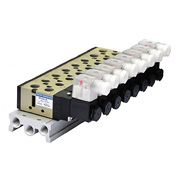
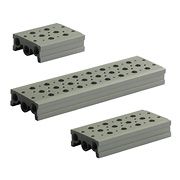
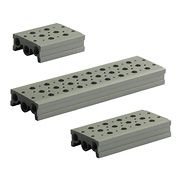
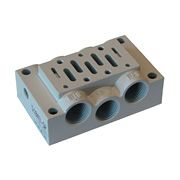
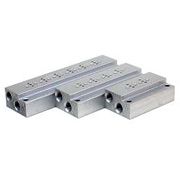
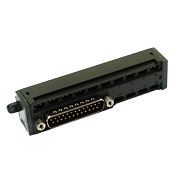
Login and Registration Form